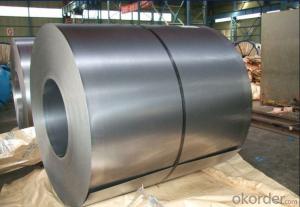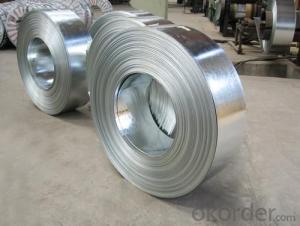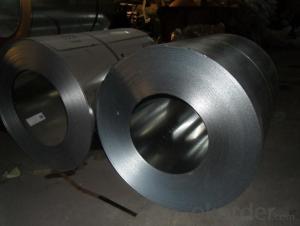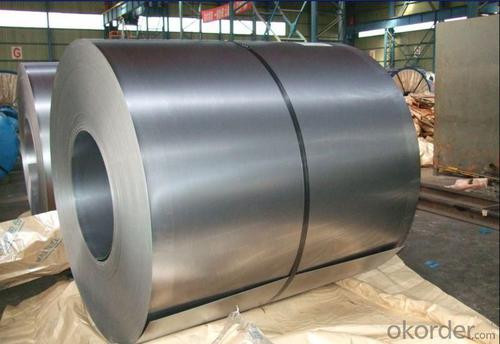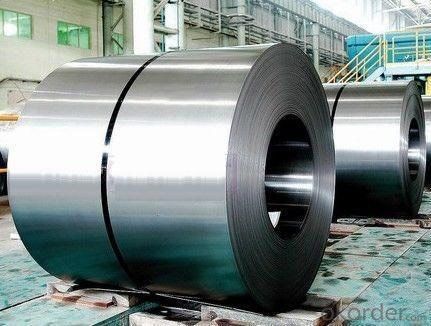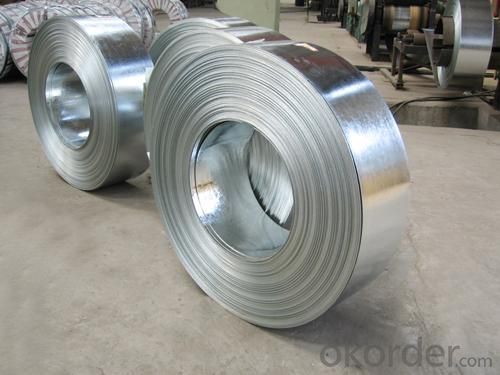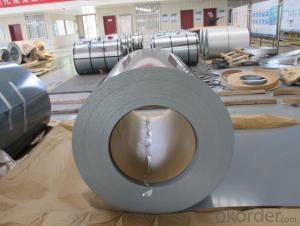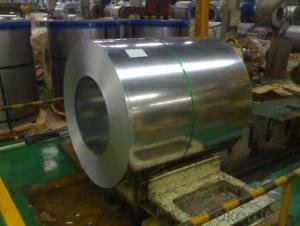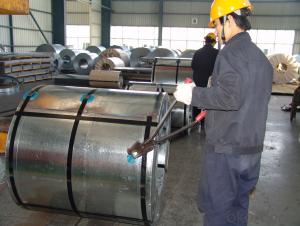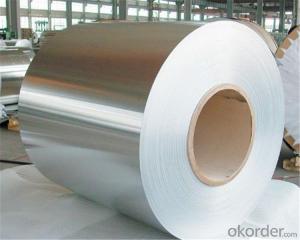JIS G3302 Hot Dipped Galvanized Steel Coil
- Loading Port:
- China main port
- Payment Terms:
- TT OR LC
- Min Order Qty:
- 5 m.t.
- Supply Capability:
- 100000 m.t./month
OKorder Service Pledge
OKorder Financial Service
You Might Also Like
Specification
JIS G3302 Hot Dipped Galvanized Steel Coil
Specification
Hot Dipped galvanized steel coil
1. Thickness: 0.16-3.0mm
2. Width: 610-1250mm
3. Coil Wgt.: 2.5-8Mt
4. Zn Coating: 60-300
Galvanized Steel Coil Technical Data
Chemical Composition | ||||||
GRADE | C | Si | Mn | P | S | Ti |
SGCC/DX51D+Z | ≤0.10 | ≤0.50 | ≤0.60 | ≤0.10 | ≤0.030 | ≤0.020 |
DX52D+Z | ≤0.10 | ≤0.50 | ≤0.60 | ≤0.10 | ≤0.030 | ≤0.020 |
SGCD/DX53D+Z | ≤0.10 | ≤0.30 | ≤0.50 | ≤0.05 | ≤0.030 | ≤0.020 |
SGCE/DX54D+Z | ≤0.10 | ≤0.30 | ≤0.30 | ≤0.03 | ≤0.020 | ≤0.020 |
DX56D+Z | ≤0.10 | ≤0.30 | ≤0.30 | ≤0.03 | ≤0.020 | ≤0.020 |
Structural | ≤0.20 | ≤0.60 | ≤1.70 | ≤0.10 | ≤0.045 | |
Mechanical Properties | ||||||
GRADE | Yield Strength MPa | Tensile Strength MPa | Elongation % | |||
SGCC(DX51D+Z) | ≥205 | ≥270 | - | |||
SGCD(DX53D+Z) | - | ≥270 | 38 | |||
SGCE(DX54D+Z) | - | ≥270 | 40 | |||
DX56D+Z | - | ≥270 | 42 | |||
GRADE | Yield Strength MPa | Tensile Strength MPa | Elongation % |
S220GD | ≥220 | ≥300 | ≥20 |
S250GD | ≥250 | ≥330 | ≥19 |
S280GD | ≥280 | ≥360 | ≥18 |
S320GD | ≥320 | ≥390 | ≥17 |
S350GD | ≥350 | ≥420 | ≥16 |
Galvanized Steel Coil Application
(1) Guardrails, roofing, ventilation ducts, gutters and down spouts;
(2) Pre-paint and post paint applications, ceiling suspension bars, shutter door rails;
(3) Auto parts, electrical appliances, refrigerator appliances, vending machines, washing machines, showcases and other structural use.
Galvanized Steel coil Show
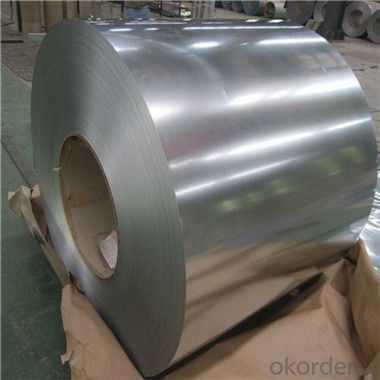
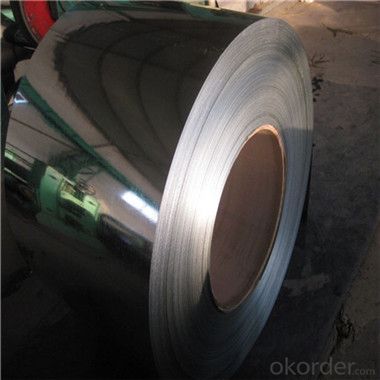
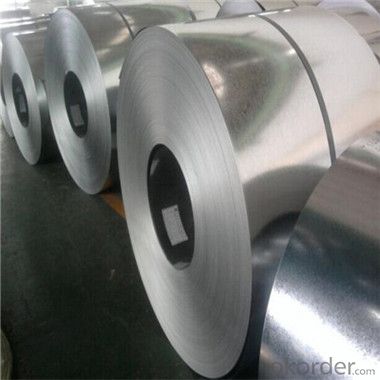
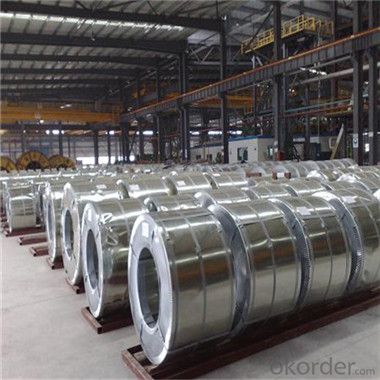
- Q: I was just thinking, is their a way to make steel qualities inherent in concrete, therefore eliminating the need for re bar?
- Mixing hot steel with liquid concrete would be very hazardous to your health. Steal in a molten state would flash the water in the concrete mix into steam and the steam would blow concrete and steel out of your mold. This would be about like being shot with a shotgun. This occurred in a steel mill near me some years ago on a rainy day when some steel splashed from a ladle and landed on a puddle of water, part of the siding was blown off the building and one worker sent to the hospital.
- Q: How are steel coils inspected for surface finish?
- Steel coils are inspected for surface finish through a visual examination by trained inspectors. They carefully inspect the coils for any defects, such as scratches, pits, or uneven surfaces. Additionally, specialized equipment like optical scanners or digital cameras may be used to capture high-resolution images for a more detailed analysis. The goal is to ensure that the surface finish of the steel coils meets the required standards and is free from any imperfections that could affect its quality or performance.
- Q: What are the different coil slitting methods used for steel coils?
- Steel coils can be slit into smaller, narrower coils using various methods. These methods serve the purpose of cutting the coils to suit specific applications. 1. The most commonly used method for coil slitting is blade slitting. Circular knives or blades are employed to cut the steel coil into narrower strips. These blades are placed at predetermined intervals and usually attached to a rotating shaft. As the coil passes through the blades, their circular motion slices through the coil, resulting in the desired narrower strips. 2. Another method, known as rotary shear slitting, involves the use of two sets of rotary shear knives to cut the steel coil. These upper and lower sets of knives rotate in opposite directions, creating a scissor-like cutting action. As the coil is fed through the shearing blades, the sharp edges of the knives slice through the coil, producing the desired narrower strips. 3. Sliding shear slitting is yet another method utilized for coil slitting. This method involves a stationary upper knife and a moving lower knife to cut the coil. The lower knife moves back and forth across the coil while the upper knife remains fixed. As the coil passes through the moving knife, it is cut into narrower strips. 4. Crush slitting is a less common method employed for coil slitting. In this method, the steel coil is fed through a set of rollers equipped with blades. Although the blades are not sharp, the pressure exerted by the rollers crushes and fractures the coil, resulting in the creation of the desired narrower strips. 5. Laser slitting is a modern and precise method used for coil slitting. It utilizes a laser beam to cut through the steel coil. The laser beam is directed onto the coil, and its high intensity melts and vaporizes the steel, creating a narrow slit. Laser slitting offers high accuracy and a clean cut, making it suitable for specialized applications. Each of these coil slitting methods possesses its own advantages and limitations. The choice of method depends on factors such as the type of steel, desired strip width, production volume, and required precision. Manufacturers select the most suitable method based on their specific requirements and the properties of the steel coils they are processing.
- Q: I received a very nice set of stainless steel cookware as a wedding gift. While very pretty, Im finding them almost useless for cooking. Everything sticks, they're difficult to clean, and Im using my old non-stick pans instead. Should I simply leave the stainless out for decortive purposes, or are stainless steel pans better for some applications?
- Why Use Stainless Steel Cookware
- Q: How do steel coil manufacturers handle product recalls?
- Steel coil manufacturers handle product recalls by following a systematic process to ensure the safety and satisfaction of their customers. Here is an outline of the steps involved in handling product recalls: 1. Identification of the issue: Once a potential problem or defect is discovered in the steel coils, manufacturers initiate the recall process. This may be due to a quality control failure, safety concern, or non-compliance with industry standards. 2. Investigation and evaluation: The manufacturer investigates the root cause of the problem and evaluates the potential impact on customer safety and satisfaction. They analyze the affected batch or production run to determine the extent of the issue. 3. Notification: Manufacturers promptly notify customers who have purchased the affected steel coils. They use various channels, such as direct mail, email, phone calls, or public announcements, to inform customers about the recall. The notification includes specific details about the problem, potential risks, and instructions on how to proceed. 4. Retrieval and replacement: The manufacturer provides instructions on how customers can return or dispose of the recalled steel coils safely. They may offer options for product retrieval, such as direct pick-up from the customer's location or designated drop-off points. In some cases, manufacturers may provide replacement steel coils or reimburse customers for the affected products. 5. Public communication: Steel coil manufacturers issue public statements and notifications to inform the wider market, distributors, and retailers about the recall. This ensures that all stakeholders are aware of the issue and can take appropriate actions to address it. 6. Corrective actions: After retrieving the recalled steel coils, manufacturers implement corrective actions to rectify the issue. This may involve improving their quality control processes, upgrading manufacturing equipment, or revising product specifications to prevent future recalls. 7. Customer support: Throughout the recall process, manufacturers provide customer support to address any concerns, questions, or complaints. They establish dedicated hotlines, email addresses, or online portals to assist customers with their inquiries and guide them through the recall process. 8. Regulatory compliance: Steel coil manufacturers ensure compliance with relevant regulatory authorities and standards organizations during the recall process. They work closely with regulatory agencies to provide necessary information, documentation, and updates to address any legal requirements. Overall, steel coil manufacturers prioritize customer safety and satisfaction when handling product recalls. They follow a well-defined process that involves identification, investigation, notification, retrieval, replacement, public communication, corrective actions, customer support, and regulatory compliance. Through these steps, manufacturers aim to rectify the issue, prevent harm, and maintain trust with their customers.
- Q: How are steel coils used in the production of steel latches?
- Steel coils are used in the production of steel latches by being processed into flat sheets or strips, which are then cut and shaped to form the various components of the latch. These coils provide a ready-to-use source of high-quality steel, ensuring the strength and durability of the final product.
- Q: I have a 03 jeep wrangler and looking to upgrade to black wheels. I was wondering if the difference between steel and alloy wheels is worth paying double.
- steel is steel is steel- they will always be heavy you would have to weigh them to find out--NOW if you are going to alloy wheels they are typically aluminum and yes they are lighter -this is good because it lightens your un-sprung weight and is less harmful to your suspension-good for your auto
- Q: How do steel coil manufacturers manage inventory?
- Steel coil manufacturers manage inventory through various strategies and techniques to optimize production, minimize costs, and meet customer demands. Here are some common practices employed by steel coil manufacturers to effectively manage their inventory: 1. Demand forecasting: Steel coil manufacturers analyze market trends, historical sales data, and customer orders to forecast future demand accurately. This helps them determine the required inventory levels and plan production accordingly. 2. Just-in-time (JIT) inventory: Many steel coil manufacturers follow the JIT inventory system, where they maintain minimal inventory levels by receiving raw materials shortly before production and delivering finished goods immediately after production. This approach minimizes carrying costs and reduces the risk of excess inventory. 3. Supplier collaboration: Close collaboration with suppliers is crucial to manage inventory effectively. Steel coil manufacturers work closely with their suppliers to ensure timely delivery of raw materials, monitor quality, and maintain consistent supply. Regular communication and sharing of production forecasts help suppliers plan their inventory accordingly. 4. Safety stock: Steel coil manufacturers maintain a certain level of safety stock to account for unpredictable fluctuations in demand, supply chain disruptions, or delays in raw material deliveries. This acts as a buffer to avoid stockouts and maintain customer satisfaction. 5. Inventory control systems: Implementing modern inventory control systems, such as Enterprise Resource Planning (ERP) software, allows steel coil manufacturers to track inventory levels, monitor stock movements, and automate various inventory management processes. These systems provide real-time data and analytics, enabling better decision-making and improved inventory accuracy. 6. Efficient production planning: Steel coil manufacturers optimize production planning to minimize inventory holding costs. They schedule production based on demand forecasts, prioritize orders, and aim for efficient production runs to reduce setup times and material wastage. 7. Regular inventory analytics: Steel coil manufacturers regularly analyze their inventory data to identify slow-moving items, obsolete stock, or excess inventory. By identifying such issues, they can take corrective actions like offering discounts, initiating sales promotions, or adjusting production schedules to prevent inventory buildup. Overall, effective inventory management is crucial for steel coil manufacturers to maintain a lean and efficient operation while meeting customer demands. By applying these strategies, manufacturers can strike a balance between supply and demand, reduce costs, and improve customer satisfaction.
- Q: I am refinishing a table and on my can of polyurethane, it indicates not to sand with steel wool prior to application. Why is that?
- it can turn dark! use 400 to 600grit wetdry sandpaper watch your edges!!!
- Q: Can steel coils be used in the production of automotive parts?
- Yes, steel coils can be used in the production of automotive parts. Steel coils are often used in the manufacturing process of various automotive components such as body panels, frames, chassis, suspension parts, and engine parts. The steel coils are typically processed through various methods such as cutting, stamping, bending, and welding to shape them into the desired automotive parts. Steel is a preferred material for automotive parts due to its strength, durability, and resistance to corrosion. Moreover, steel coils are available in different grades and thicknesses, allowing manufacturers to tailor the material properties to meet specific requirements for different automotive applications. Overall, steel coils play a critical role in the production of automotive parts, contributing to the performance, safety, and longevity of vehicles.
Send your message to us
JIS G3302 Hot Dipped Galvanized Steel Coil
- Loading Port:
- China main port
- Payment Terms:
- TT OR LC
- Min Order Qty:
- 5 m.t.
- Supply Capability:
- 100000 m.t./month
OKorder Service Pledge
OKorder Financial Service
Similar products
Hot products
Hot Searches
Related keywords
